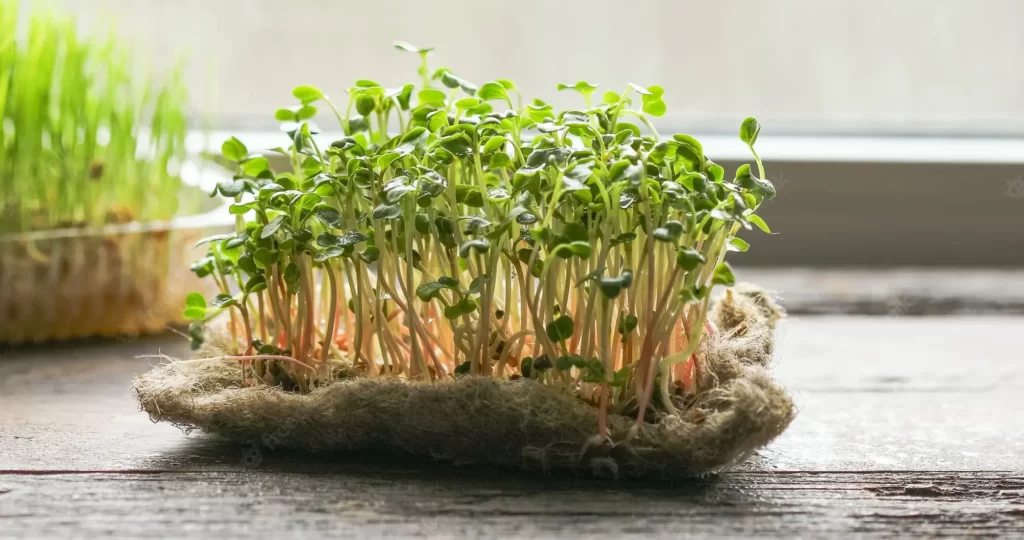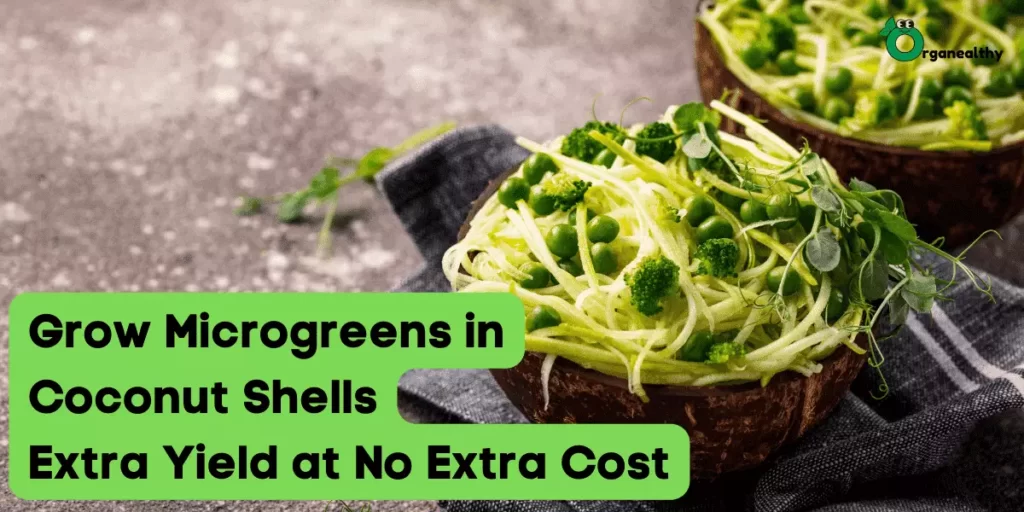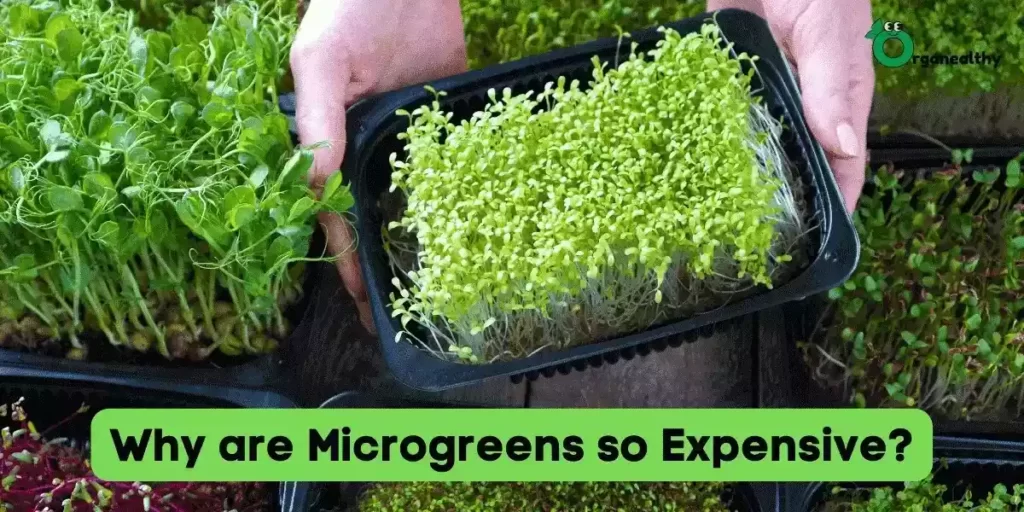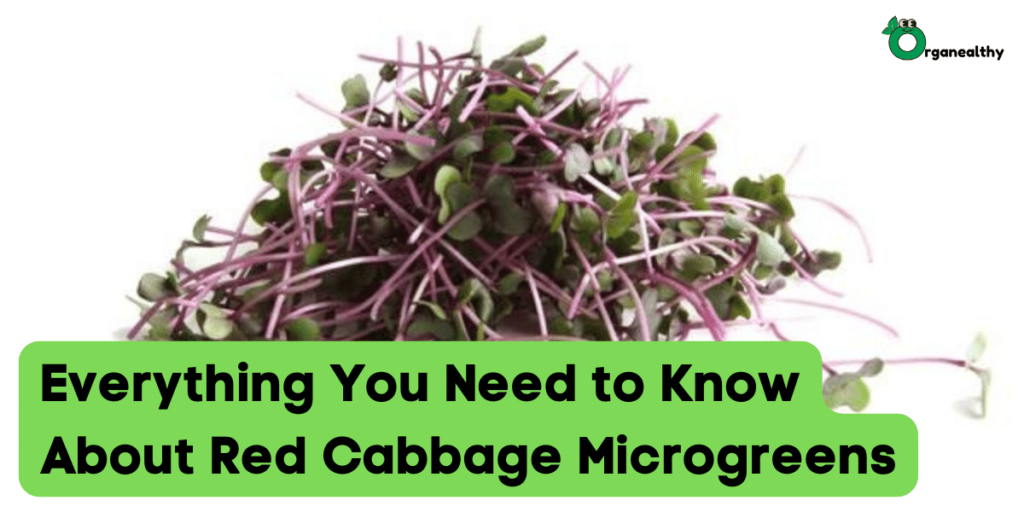Microgreens are a healthy and tasty superfood packed with nutrients. Radish microgreens are one such superfood with immense health benefits.
Maybe you want to grow radish microgreens for your small-scale microgreens business or want to include them in your diet because you recently discovered their health benefits. No matter what the reason, there are a few things you should know about those pinkish, delicious, and super-healthy microgreens.
Radish microgreens are an absolute favorite among chefs and home growers. However, while nurturing them you might need some questions to be answered like, how to grow them? What are the proper ways to harvest them? How to store them properly? What are the health benefits? Ways to consume them, and many more.
They are also one of the easiest and quickest greens to grow. You can grow a consumable batch of radish microgreens in less than two weeks. Their surprisingly crunchy texture and fresh flavour can be a fantastic addition to your daily meals. Radish microgreens help in weight loss, skin troubles as well as improves the cardiovascular system.

If you love spicy flavour then radish microgreens can be a great condiment to add to your daily meals. They are best when consumed raw, however, you can toss them up with your pasta dishes to add that spicy kick.
Stick with the article as we are going to tell you how to grow radish microgreens and how to include this delicious, crunchy, and vibrant superfood in your daily meals.
What are Radish Microgreens?
Radish microgreens are the product of the same seed that produces a radish bulb. However, these delicate greens contain twice the vitamins and minerals as the same amount of radish bulb would.
That fact is enough to make you say, “really? I need to know how to grow these radish microgreens!”
Some studies have noted that microgreens contain 40 times more nutrition than their mature counterparts. This is mainly because microgreens are harvested within 14 days from germination and this allows the plants to lock in their early nutrients which are rather spread out and fade away as the plants mature.
The best part is that you can choose your favorite edible radish seed and cultivate them into microgreens.
Do Radish Microgreens Taste Good?
Yes, they definitely do!
Radish Microgreens taste like a peppery bulb of radish. Although they have a more defined peppery radish punch with a dash of freshness along with the crunch. They could be an amazing fill-in for the lettuce in your next salad as it’s the perfect fusion of spice, texture, and colour. Our favorite is to add them to the sandwiches to enhance the flavour with an added touch of healthiness.
Can You Eat Radish Microgreens?
Yes, absolutely. In fact, you should if you are not already eating them.
Radish microgreens are one of the most loved varieties among microgreens consumers. They are leading the nutrition race across the board. In 2012, the Journal of Agriculture and Food Chemistry published a detailed study of commercial microgreens.
The study analyzed various varieties of radish such as green daikon radish, china rose radish, and opal radish and determined that they are a high source of vitamin K, C, E, and Beta Carotene.
How to Grow Radish Microgreens?
The radish microgreen seeds are easy to handle and require very little preparation time. They are best for first-time growers as they germinate quickly and are easy to harvest. We have broken down the growing process into 9 simple steps.
Preparing the tray and the soil
- Add the good quality potting mixture to your planting tray
- Make sure the tray has small holes at the bottom for proper drainage
- Lightly tap the layer of soil from above with another tray to fill in the air pockets
- Level the soil just below the top of the tray
Pre-seeding process
- Gently spray water on the soil (the water should be chlorine-less)
- Allow the soil to absorb water
- Spray the surface once more
- If you notice any depressions or high spots, use fingers to even out the surface
Seeding process
- Prepare the radish microgreen seeds in a shaker bottle. A shaker bottle will help you to spread the seeds evenly
- The ideal proportion of radish seeds to the soil is 10 seeds per square inch
- According to a study, 109g of radish microgreens seeds/tray yield the best fresh harvest
- Don’t waste too much time on this, just use a good shaker bottle and you are good to go
Sowing
- Once the soil is soaked and the seeds are prepared, it is time to sow them
- Use the shaker bottle to scatter the seeds around. Do it in concentric circles. Use your spare hand to cover the boundaries otherwise the seeds will bounce out of the tray
- Spread the seeds as evenly as possible
- After all the seeds are sprinkled, even out the clumps of seeds in the areas with fewer seeds (especially the boundaries of the tray)
Germination
- Now, it’s time to prepare the seeds to germinate
- Again, use the spray bottle to wet the seeds. Go easy with the spray, you don’t want the seeds to fly off the tray
- The water will help the seeds to settle into the soil
- Use a tea towel or cardboard to cover the seeds and keep lights off them
- Make sure you do not seal the tray tightly
| Why blackout period and pushing down the seeds is important for microgreens? When you cover your seeds to keep them away from the light and put a weight on them, it is known as the blackout period. The weight presses the seeds into the soil and helps to grow deep roots, thus providing the plant a strong and healthy root support. |
Put a weight of about 5 pounds on the cover, you can use a similar tray for this. The weight will encourage the plants to root in the soil as well as keep the cover on.
Blackout period
- Do not disturb the tray for the next 2-3 days
- The cover retains enough moisture for the radish seeds to grow into microgreens
- Let the seeds germinate and grow
After-blackout period
- We would recommend removing the cover and weight only after 3 days
- After 3 days, you will notice that it’s germinating, and the radish seedlings are growing
- If the germination rate is good and the seedlings are like the ones in the picture given below then you can remove the cover and put them under a light
- In case the germination is smaller than the picture, there’s a possibility that your soil is dry
- If so, use the spray bottle to wet the surface and put the cover back. Let the seeds germinate for two more days before checking on them again

Growth period
- Now that the radish microgreens have germinated and started growing, it’s time to show them some light
- The light source can either be the sun or artificial LED lights. However, we recommend going for sunlight as it is natural and free
- Initially, your plants might look a little white or yellowish. Do not worry as they will grow into dark green microgreens once they get proper light
- Spray the soil surface for one last time if it appears dry
The last few days
- We will water the growing microgreens from the bottom
- Take about a quarter an inch of water in a separate tray. Place the planting tray on the watering tray and allow it to absorb the water from the bottom holes
- Watering the microgreens from the bottom keeps the leaves and stems dry
- The regularity of watering depends on the humidity and wind across the tray. However, you should check every other day whether the soil is dry or not and water accordingly
How to Harvest Radish Microgreens?
Now that you have grown your first batch of radish microgreens it is time to harvest them. The most ideal time to harvest the microgreens is between 8-10 days, however, many tend to go till 14 days. Truly this depends on the germination speed, but two weeks is the utmost margin.
Anyway, you are good to go once they are 2 ½- 3 inches tall. This means that the radish microgreens are during the cotyledon stage and just before the first true leaves form, making it the perfect time to harvest them.
To harvest the radish microgreens,
- Tilt the tray about 45 degrees over a cutting board or a plate
- Use a very sharp knife or scissors to cut the microgreens just above the soil surface
- Do not disturb the soil and wipe off the soil from the cut radish microgreens
How to Store the Radish Microgreens?
You can get the most of this colorful and delicious superfood by adding them to your meals but the question arises: what to do with the rest? How to store these radish microgreens so they stay fresh and crunchy for a long time?
We will always recommend you wash the radish microgreens before using them to get rid of any soil particles stuck to the stem or leaves. However, the best suggestion is to cut the microgreens just before using them, this way you can put them directly on your plate and enjoy their crunch.
Of course, you won’t be able to consume all of them at once, so put them in a zip-lock bag. The bag must have several small slits on them to let the air circulate. Keep in mind, do not store microgreens wet, or they will rot. Store them dry and wash them with water right before you want to eat them.
The drier they are, the fresh they will be. Squeeze the air out of the bag nicely and store the microgreens in the refrigerator. Around 36°F (2°C) is the accurate temperature to store the radish microgreens. Keep them away from the sunlight. Direct sunlight will alter the taste of microgreens.
Another way of storing them is between damp pieces of paper towels in a plastic bag. This helps in moisture retention. This process allows you to store the microgreens for about a week in a refrigerator.
Do Radish Microgreens Regrow After Cutting?
Yes, radish microgreens are one of those few varieties that do regrow if you have left a leaf while harvesting them. But the survival chances depend on how healthy that one leaf is.
However, the regrown microgreens have a weird taste. Moreover, it is observed that the regrowing process is never complete. You can definitely, regrow the radish microgreens for an experiment but they won’t deliver the quality they generally would.
A fresh batch is always recommended. You can put the soil for composting and create organic fertilizer for your next batch of microgreens.
Radish Microgreens Nutrition
Radish microgreens are extremely healthy as they contain the most vital vitamins and minerals in abundance. They are highly concentrated with Vitamin B3, Vit.B6, Vit. C and Folate. Along with that, they contain Vitamin A, K, iron, potassium, phosphorus, beta carotenes, calcium, magnesium, pantothenic acid, and zinc.
Nowadays, most people have meals that do not fulfil their nutritional needs per day. Many people skip their meals altogether because they are late for their work, or are occupied with their work. This can lead to severe nutritional deficiency and worrisome health conditions as the person grows older.
Hence, microgreens are known as the best supplement for people who want to achieve optimum nutritional needs. As per one comparative study done between radish microgreens and mature radish vegetables, the former had 1-3 times higher concentrations of essential minerals like iron, magnesium, potassium, calcium, total phosphorous, vitamin B9, vitamin C, and Omega-3 fatty acids.
Health Benefits of Radish Microgreens
- It helps in the improvement of the cardiovascular system – Folate and Vitamin B6 present in the radish microgreen breaks down the homocysteine (the fat deposition in the blood vessel) which causes heart attacks and brain haemorrhages.
- Anti-cancer food – The high glucosinolate present in radish microgreens makes it a more sustainable anti-cancer food than some of the other greens.
- Helps in weight loss – Your weight loss diet is incomplete without radish microgreens. These tiny greens contain low calories and are enriched with vitamin C, which helps to burn body fat. Microgreens even fulfil the energy requirement of the body.
- Skin benefits – Our skin daily faces so many issues like pollution, UV rays, sweat. The Vitamin C present in the radish microgreens destroys those molecules and nurtures the skin. Enjoy a natural glow on your skin.
- Alzheimer’s – The radish microgreens are highly concentrated in antioxidant-rich components like polyphenols. This helps to reduce the risk of Alzheimer’s disease.
- Diabetes – The antioxidants present in radish microgreens reduce stress. This further prevents the sugar from entering the cells properly. Research shows that radish microgreens increase the glucose uptake of cells by 25% to 44%, thus helping in reducing diabetes.
Radish Microgreens Recipes
These beautiful and pinkish microgreens do more than just add that peppery crunch to your food. Radish microgreens are very versatile in the kitchen which makes it easy for you to incorporate them into your foods. However, these microgreens have a very distinct flavour of their own
Adding radish microgreens to your salads or wraps gives an extra zing and crunchy texture to it. Besides adding a pop colour to your dishes, they taste great!
1. Pizzas – Who doesn’t love pizzas? A pesto pizza with mozzarella infused with radish microgreens is a heavenly combination. You can either add them in the cooking process to wilt them a little bit or top the pizza with crunchy goodness.
2. Beef Burgers – Add the radish microgreens along with some cabbage and mayonnaise to enhance the flavour of your regular burgers. It is a great alternative for a lighter flavour burger.
3. Smoothies – Radish microgreens blend into amazing smoothies. It’s a great way to start your day with a glass of fresh and healthy radish, broccoli, and wheatgrass blend!
4. Salads – Throw in some microgreens such as radish, arugula, pea shoots, sunflowers, and beets along with acorn squash and tahini dressing for a colorful bowl of goodness. Plus, this recipe is vegan and gluten-free!
5. Microgreen Sushi – Microgreens and sushi? Yes, you can incorporate radish microgreens in sushi as well. While making sushi rolls, don’t hesitate to add them in. They add a good umami flavour and crunch.
6. Sandwiches – The most favorite way of having radish microgreens is with sandwiches. Something as simple as a grilled cheese and ham sandwich is elevated by the microgreens.
Apart from these few recipes, you can garnish pretty much any dish with radish microgreens. Top the hot dishes like pizzas, soups, curries, omelets, stir-fries; or sautéing the pasta with these microgreens is a classic way to infuse them into your foods.
Depending upon your likings and skills you can either make the radish microgreen the main ingredient or just a garnish.
Conclusion
The radish microgreens are one of the most popular varieties of microgreens and thus eaters and growers love them equally for their taste, texture, and health benefits.
However, only a few people are aware of these tasty and healthy microgreens and their health benefits but once more people get to know about radish microgreens, more people are going to get into growing this superfood for self-consumption or commercial purposes.
Healthy microgreens with such prominent flavors are truly a blessing. Besides the amazing flavors, radish microgreens can alleviate major health hazards. They are enriched with vital nutritional values to fight the risk of certain diseases as we discussed in the article.
Given that, they are cost-effective and very easy to grow at home. With proper care, you can even store them in your refrigerators. Honestly, radish microgreens are a great way to consume vegetables without much expenditure.
So, start growing your first batch of radish microgreens today!








